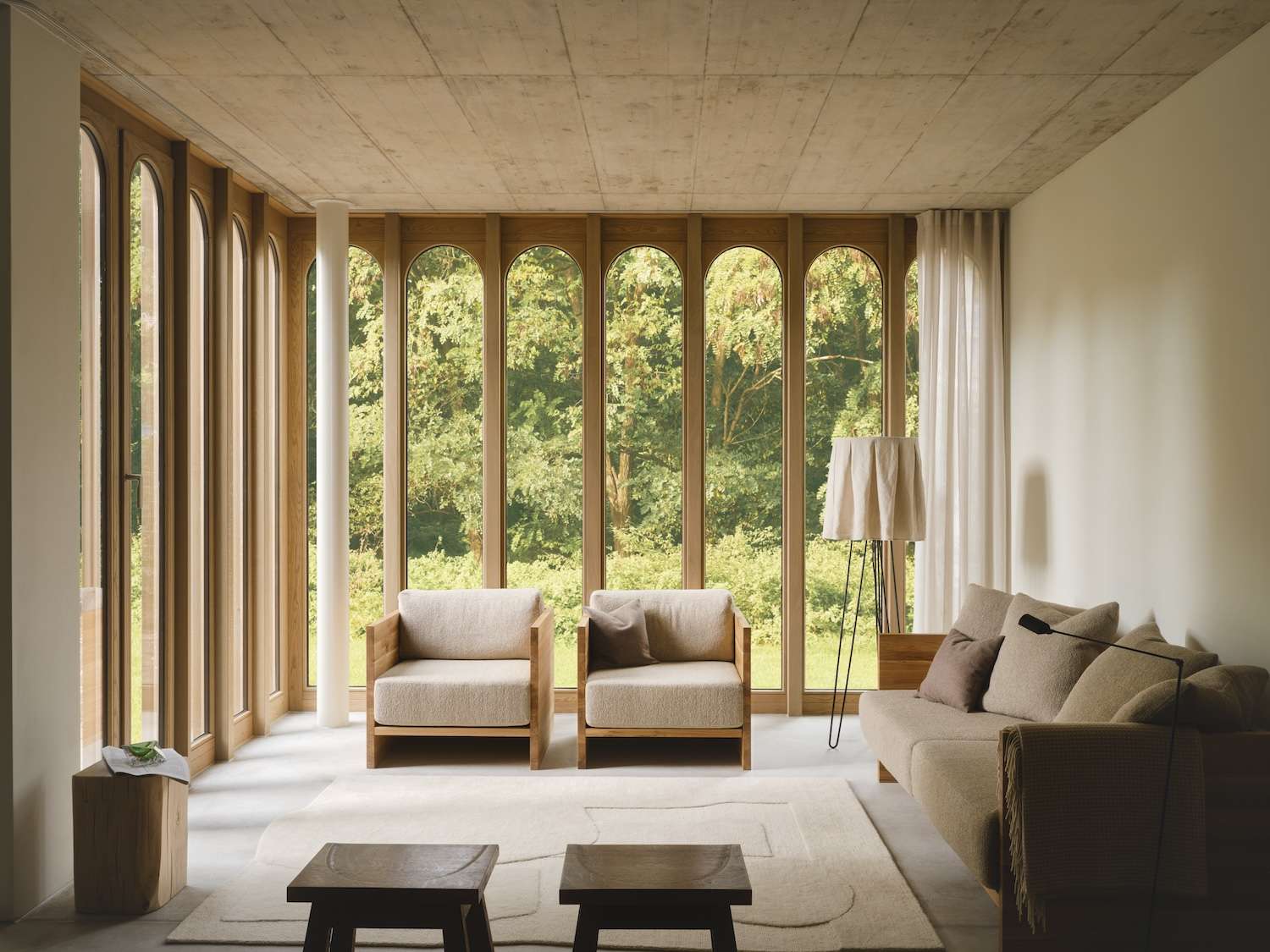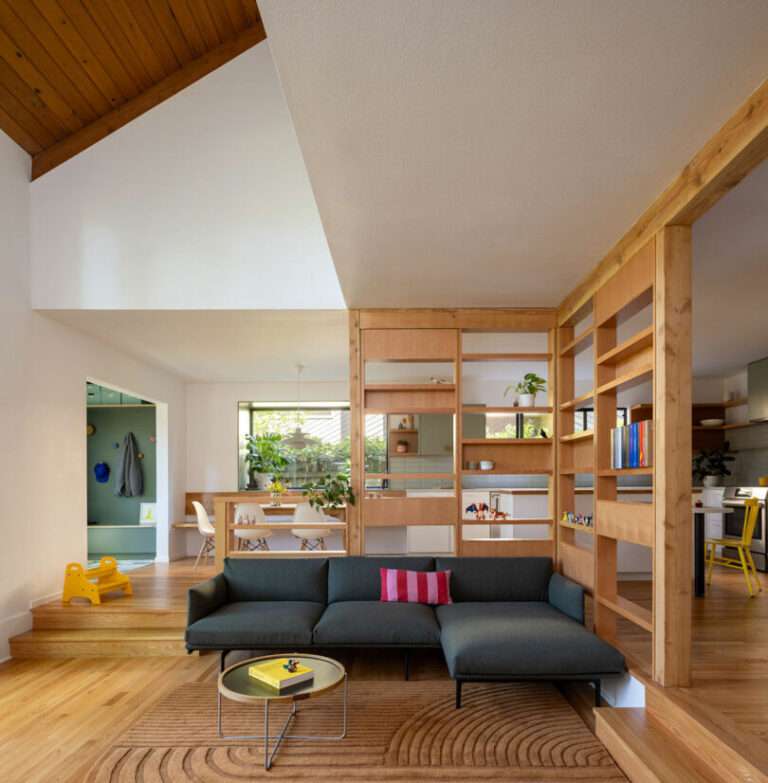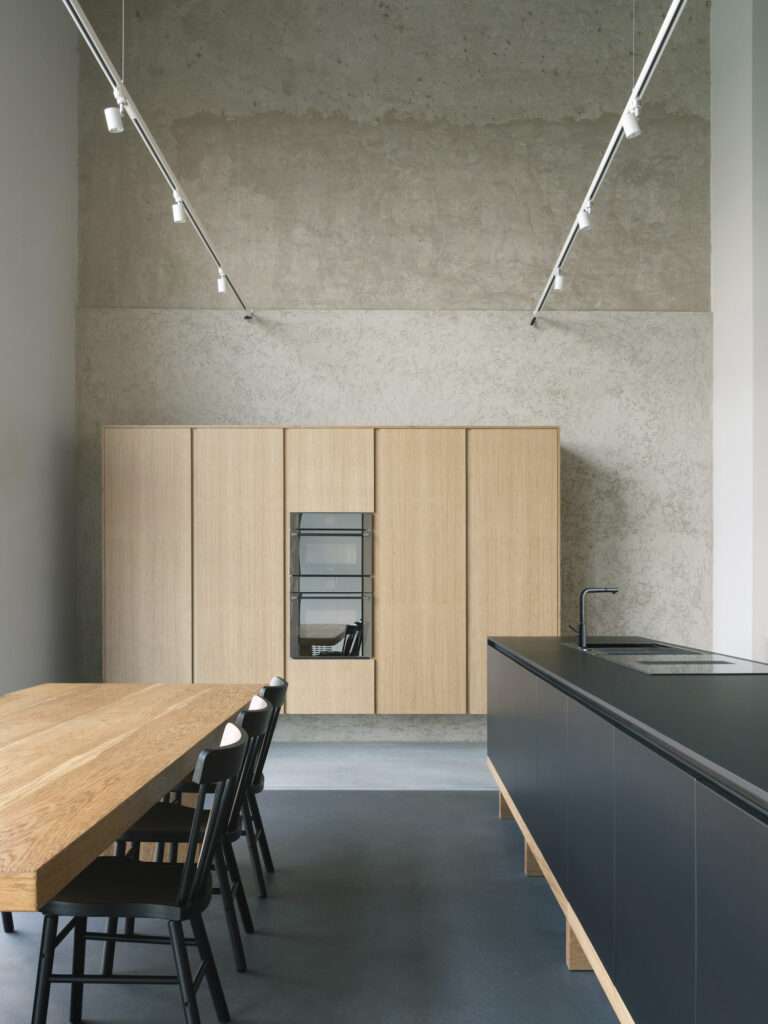
Sankt Göres is a minimal architecture project located in Dusseldorf, Germany, designed by Nidus. Set slightly back from the street, the townhouses do not immediately demand attention but gradually reveal their design details. Classic architectural elements such as arched oak windows and a façade of exposed brickwork subtly connect the homes to their surroundings, providing a sense of familiarity. The exterior composition plays with proportion and form, giving the façades a balanced, almost picture-like quality. The entrance to each home is understated, marked by a portal in exposed concrete and oak doors—one arched, the other rectangular.
Inside, the floor plans follow a deliberate sequence, with moments of emphasis followed by more subdued spaces. The design draws inspiration from Japanese living traditions, blended with German sensibilities. The living areas span three levels, with an open-plan ground floor that includes the kitchen and conservatories, while the private rooms are located on the upper floors. Despite their cohesive appearance, each townhouse retains its own identity, blending into the neighborhood without drawing excessive attention yet avoiding the trap of uniformity. The homes are accessed from the side, and their concrete-framed portals provide a strong visual presence.
Influences from Japanese architecture, such as the genkan, a lowered entrance area that bridges the indoors and outdoors, are evident throughout the design. Natural light plays a key role in shaping the interior experience. The kitchen, facing the street, captures the morning sun, while the living and dining areas open toward the garden. Oak-framed conservatories create a bright yet sheltered space between the indoor areas and the garden, adapting the traditional Japanese engawa concept to local climatic conditions. On the top floor, the architecture takes precedence, with sloping roofs accentuated by exposed wooden beams.





